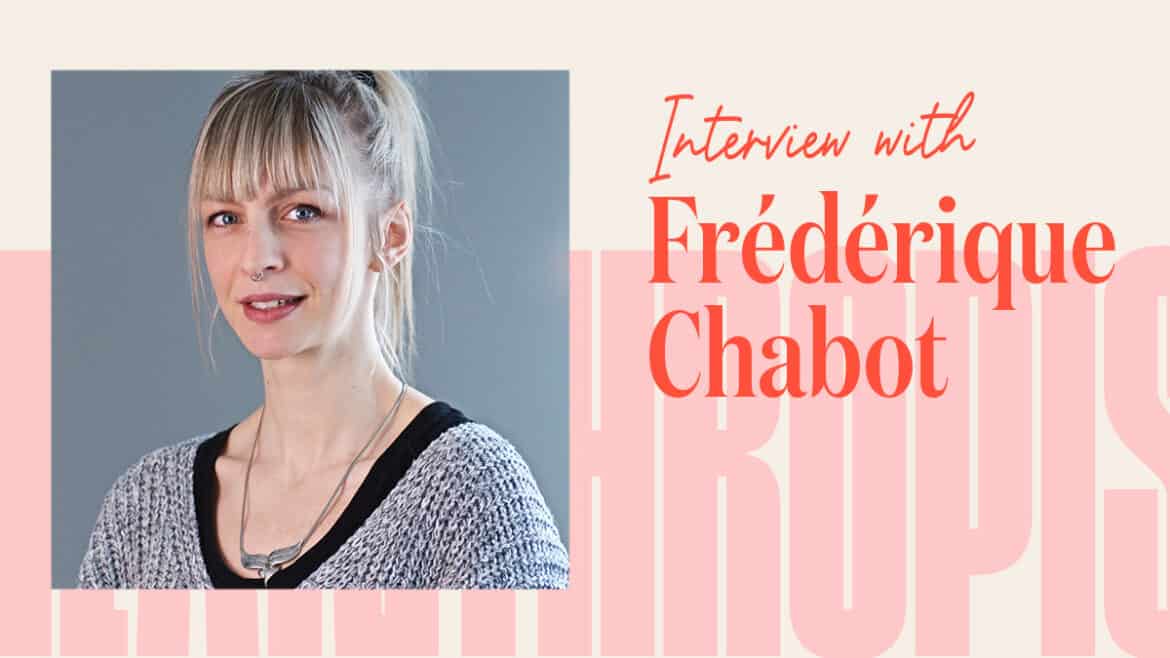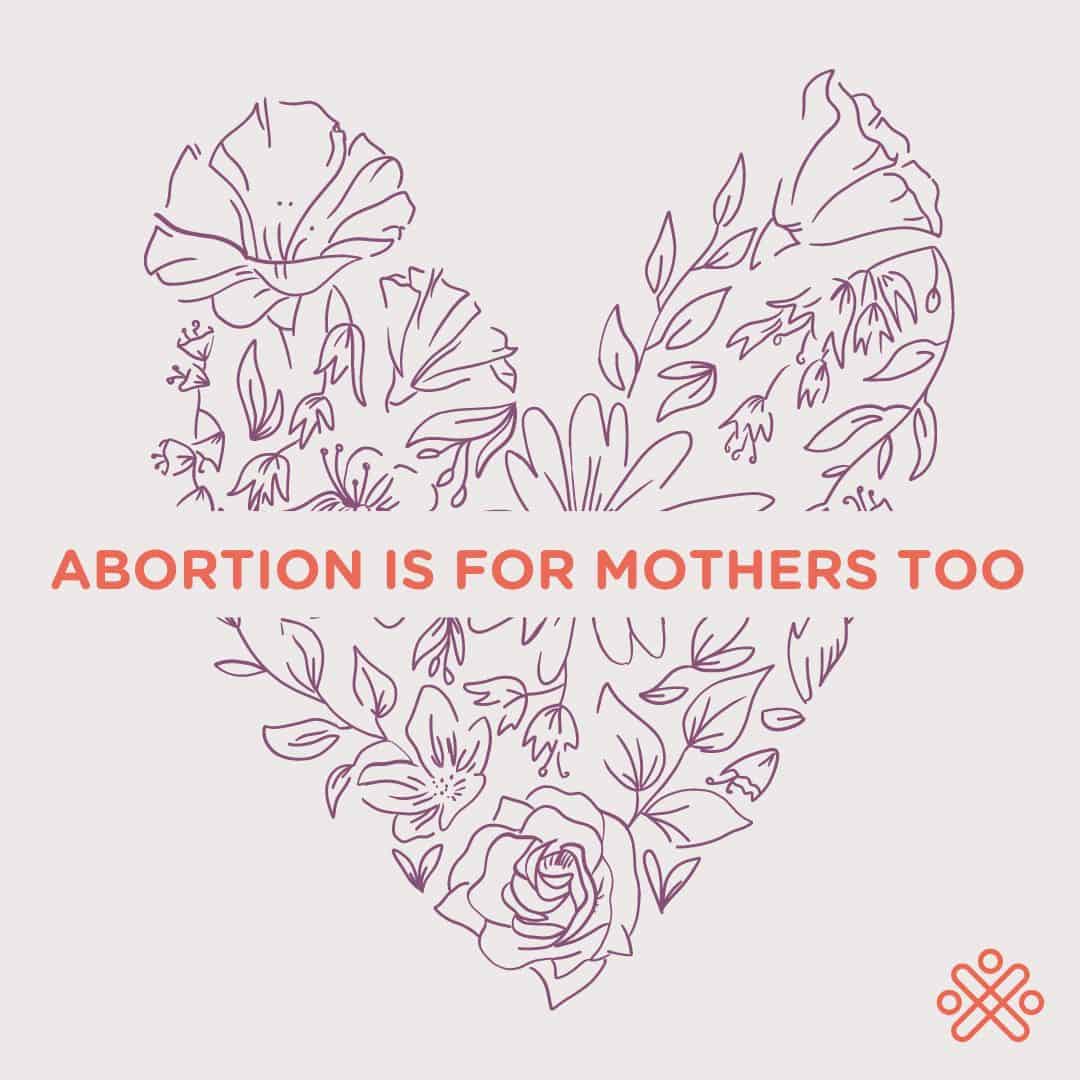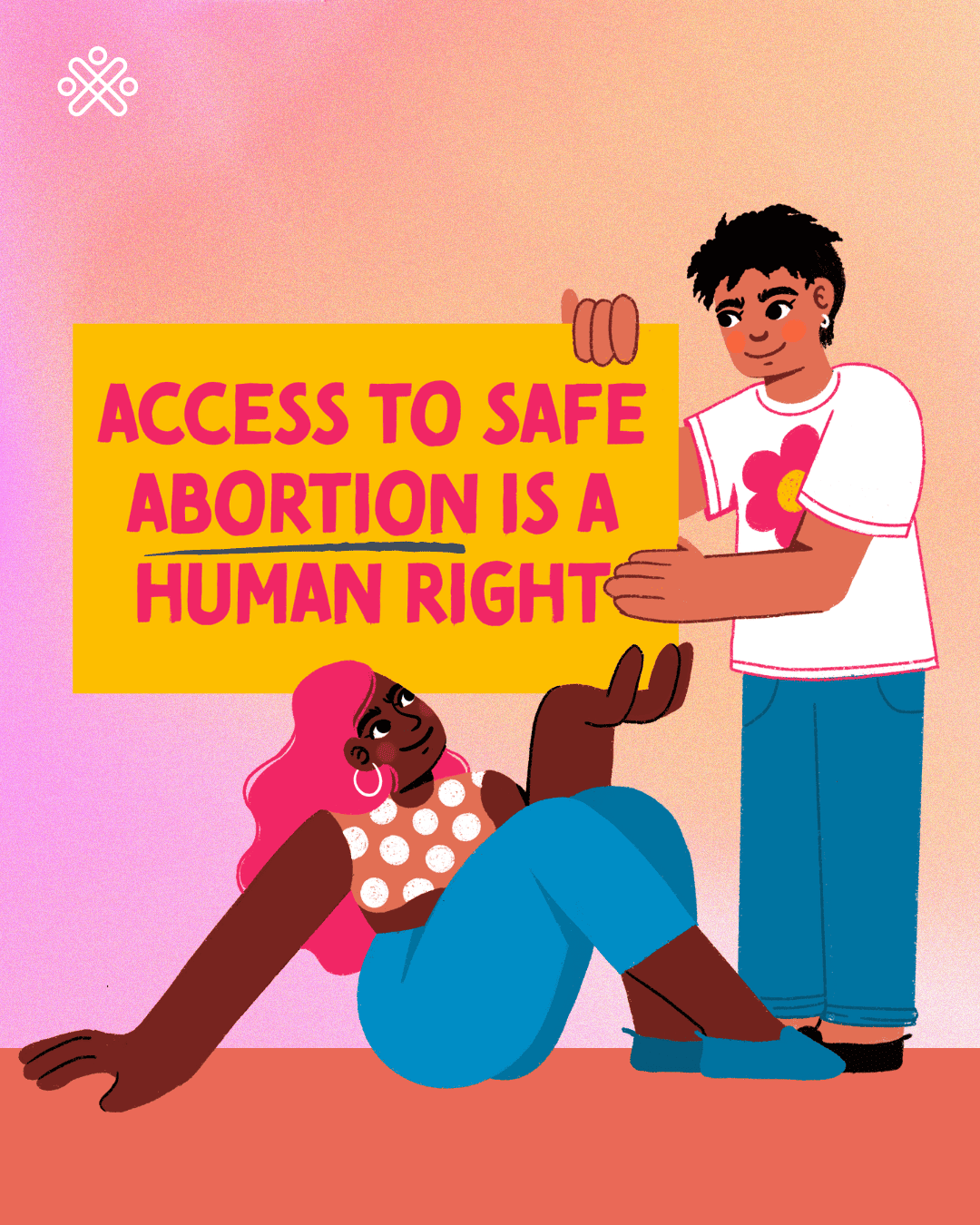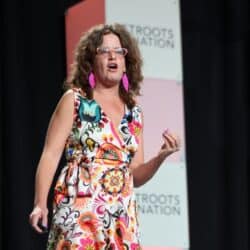While access to abortion is protected in Canada, not everyone who needs an abortion can get one, and public opinion has been affected by ideological shifts in Canada and abroad. Frédérique Chabot, director of domestic health promotion at Action Canada for Sexual Health & Rights, talks about policy goals, framing the case for increasing access, and the need to dispel harmful narratives.
The global abortion-rights landscape has shifted significantly over the past decade. Predominantly Catholic countries like Ireland, South Korea, and Argentina that historically opposed abortion have legalized access, driven by sustained public movements like #HomeToVote and the Green Wave. In the U.S., meanwhile, evangelical and alt-right movements have succeeded in dismantling protections for abortion and are feeding a backlash against sexual and reproductive health services, including abortion and gender-affirming care.
In Canada, abortion has been decriminalized since 1988. While access to abortion is protected, not everyone who needs an abortion can get one, and public opinion on the issue has been affected by shifts in discourse and ideology in Canada and abroad.
In an interview with The Philanthropist Journal, Frédérique Chabot, director of domestic health promotion at Action Canada for Sexual Health & Rights, spoke about Action Canada’s policy goals, the framing she and other advocates are using to make the case for ongoing and increased access to abortion services, and how changes in other countries reverberate in Canada.

Finance Minister Chrystia Freeland announced a three-year, $36-million investment to extend the Sexual and Reproductive Health Fund in the 2023 budget. Why is this investment significant at this moment in time?
We were thrilled that the budget included a three-year extension for the fund. It demonstrates this government’s commitment to improving access to abortion and sexual health services, even at a time of fiscal restraint. It will give our sector the much-needed space to continue to offer crucial services and demonstrate the need to make this fund a permanent fixture of Health Canada’s important work in helping Canadians maintain and improve their health, including their sexual health, at a time when access to healthcare, and specifically sexual and reproductive healthcare, remains fragile.
What are the dominant narratives in Canada around abortion at the moment?
One narrative is that it’s an issue that we don’t need to talk about because it’s an issue that’s resolved. And that, somehow, talking about abortion is risky. Another narrative is that access to abortion is universal and easy in Canada.
There’s also a narrative that abortion is a procedure that’s only used in rare circumstances, or by a very small percentage of people – that it’s a niche issue that doesn’t warrant a widespread public conversation. This narrative is often perpetuated by those who are opposed to abortion and seek to downplay its prevalence.

What narratives do you use in your work advocating for increased access?
We want to challenge the narrative that abortion is a debate that we’ve had already. We want to say that access to abortion is an issue we should all pay attention to and continue to address as a society.
Yes, abortion is decriminalized and Canadians support that. But it doesn’t mean that people can access it. People will be surprised to learn that if they needed an abortion today, it might be quite difficult to get one. We try to raise awareness of those issues, whether it’s citizenship issues, status, lack of access to youth-friendly services, domestic violence realities like lack of access to phones that are secure, privacy issues, et cetera.
We want to challenge the narrative that abortion is a debate that we’ve had already. We want to say that access to abortion is an issue we should all pay attention to and continue to address as a society.
Frédérique Chabot
We also frame abortion as a very common medical procedure. There are close to 100,000 abortions performed in Canada every year. One in three people who can get pregnant get an abortion in their lifetime.
Often, people who don’t support abortion access frame it as “This is a personal issue, this is an issue of conscience. Everyone can vote according to their own beliefs because that’s all it is.” We say that the choices we make together as a society will dictate people’s access to healthcare and also the realization of people’s human rights. The right to bodily autonomy, the right to information, the right to health are all responsibilities that we hold as a society. So we have to tackle these issues together.
It feels as though the conversation about abortion access has grown in volume in the past few years.
We’ve been working really hard to make access issues visible in Canada. We want to change norms and standards, and that means working with policy-makers, media, and other organizations to shape the conversation to what we think is helpful to advance the policies that we want to see changed.
What organizations like Action Canada know is that whenever we talk about abortion, support for abortion access rises.
In the 2015 federal election campaign, the Liberals made abortion an issue that was important for their party. Action Canada was already active as a voice on the national stage, although we were fairly new to the conversation at the political level. And the question was often “Should we open the debate or not?” We were kind of stuck there. Like, this is a resolved issue, we don’t need to talk about it, and anyone who wants to talk about it is bad. When in fact, what organizations like Action Canada know is that whenever we talk about abortion, support for abortion access rises.
When the Liberal Party came out with their position, which was that they were going to whip the party around the abortion issue, media-watchers counted many media stories that were critical of the move, and none that were positive. No one came to talk in favour of the proposition. No organization had the capacity to take a stand. The people working on the issue worked for small front-line organizations, clinics for whom advocacy wasn’t a main focus. Action Canada was being formed for that very reason. We were coming out of the Harper era where the non-profit sector, especially on the progressive side, was gutted. And so there was a real lack of capacity to challenge the narrative that it’s a bad thing to “reopen the debate.”

What has happened since then?
I’ve seen a lot of progress on the issue over the years because suddenly abortion was made a point in the political conversation, and there was a lot more media attention, curiosity, and space to be able to challenge that narrative and say, yes, of course abortion is decriminalized and there’s very high support for that in Canada. But it doesn’t mean that people can access it.
‘Let’s not reopen the debate’ is not the speaking point anymore. The speaking point is ‘What are we going to do to increase access to abortion?’
The way that we measure progress is how the language has changed over the years – in media, of course, but also in how policy-makers and elected officials are talking about it. We’ve had a couple elections since 2015, and we’ve been able to see that “Let’s not reopen the debate” is not the speaking point anymore. The speaking point is “What are we going to do to increase access to abortion?”
And then, just when you think it’s accepted as a narrative, the Roe v. Wade reversal happens in the U.S. And then there’s a wave of intense interest in Canada on abortion. And that has uncovered another layer of the public and the mainstream media who are encountering the idea that Canada has an access issue.
How have policy changes in the U.S. affected the way that you frame the work you’re doing?
What’s happening in the U.S. is extremely impactful in terms of the work that we do and the messaging that we want to put out there.
For the most part it’s positive. It’s strange to say that about something so devastating, but it intensified scrutiny around the issue. It’s opened this political window to speak to everyone about abortion. People who wouldn’t have necessarily paid as much attention suddenly seem very interested in the topic.
Because of the heightened emotion around the issue, people started demanding a law to secure abortion rights in Canada, which is something that reproductive rights organizations and activists in Canada don’t want.
Of course, everyone has been very interested to know if this could happen in Canada. Because of the heightened emotion around the issue, people started demanding a law to secure abortion rights in Canada, which is something that reproductive rights organizations and activists in Canada don’t want. So we had to get out in front of that message to say, “This is not something that we want and that you should support if you support access to abortion.” That was an interesting challenge. We had to find a way to be influential very quickly because the government was considering the idea because everyone was asking for it, and they saw that they might be able to do something that would respond to people’s anxiety. We had very little time to make sure it didn’t happen.
Why wouldn’t we want that type of law in Canada?
It feels like a great solution: we’re going to put a law on the books that says we protect abortion rights. The thing is, the only people in Canada who want an abortion law are anti-choice, because they’re very aware that introducing a law would demand restrictions. Not only would politicians have to negotiate for that law and compromise in some ways, it also would go counter to how abortion is regulated in the country.
The only people in Canada who want an abortion law are anti-choice, because they’re very aware that introducing a law would demand restrictions.
Everywhere in the world, abortion activists say abortion is healthcare. The only place where that’s true is Canada. We’re actually held as an example all over the world of what people want, a place where abortion is not regulated by a criminal code. After the 1988 Supreme Court ruling in the Morgentaler case and the failed attempt to introduce a law that would have restricted abortion access, abortion care became regulated as a medical procedure in Canada. This means that no law dictates when and how abortion is available. Instead, professional colleges that regulate healthcare providers have evidence-based guidelines. The Canada Health Act sets out the conditions that provincial and territorial governments must meet when administering public healthcare systems. This means that abortion should be accessible and that people shouldn’t be made to pay out of pocket for it since it’s an essential medical procedure.
Those are solid guardrails we can use to work with our governments to make abortion more accessible. A new law would simply introduce the possibility of restrictions if political parties make compromises to pass it or subsequent governments amend it according to the beliefs of their constituents. It also singles out abortion as outside of regular healthcare.
How did you frame your political response?
Sometimes, the most effective messaging with politicians isn’t about evidence or science or what the right thing to do is. Sometimes what works is messaging that speaks to the support they would or would not get from the public or experts. For example, we could say, “If you come out with this proposal, no reproductive rights organization in the country will support you. We will publicly say that this is a terrible idea.”
Sometimes what works is messaging that speaks to the support politicians would or would not get from the public or experts.
You have to figure out what matters to your audience in the moment. In this case, the government wanted to do the right thing, which was to offer the Canadian public assurance that this was really important to them. And we had to say, “This is not a solution that would lead to actual protection for abortion rights.”
And what’s your public messaging?
We say that abortion is decriminalized in Canada and not regulated in the same way it is in the U.S. What’s actually of concern in Canada is access to abortion.
Nothing is impossible, so we have to continue to focus on today’s issue, which is access to abortion, and we have to stay politically vigilant.
If I have time to add more, I also say that everyone has to continue paying attention to the issue of abortion rights, because five years ago it would’ve been unthinkable that Roe v. Wade could be reversed. And what it took was one president being elected and rushing in three judges at the Supreme Court who swore that they would never repeal Roe v. Wade but who actually had the intention of doing it. I say never discount the unthinkable. It’s not really possible in Canada, but nothing is impossible, so we have to continue to focus on today’s issue, which is access to abortion, and we have to stay politically vigilant.
What anti-choice messages scare you the most?
Probably, it’s “This is not important.” Or “It’s resolved in Canada.” Like, it’s frivolous that you’re still talking about this. We don’t need to talk about this anymore.
Another message that’s been successful in permitting anti-abortion policies or bills to go forward is the co-optation of feminist and human rights language by the anti-choice movement. Messages like “This is for women’s safety. We need to restrict abortion because it’s dangerous to women’s health. This is a woman’s safety issue.” Those messages are really dangerous and very potent. In the same vein, framing the issue as being about the rights of the unborn. I think people are pretty wise to that one, but it exists and has an impact.
Attacks on reproductive rights and gender-equality protections are at the heart of the anti-democratic efforts.
One thing that we know, but that’s difficult to communicate to the public, is that attacks on reproductive rights and gender-equality protections are at the heart of the anti-democratic efforts. The message that we need to be scared of is that reproductive rights and women’s rights are fringe.
Do you think that ‘a woman’s right to choose’ still resonates with Canadians?
Yes, very much so. That’s such a good question because – and I’m just going to speak for myself now, as someone who’s been steeped in thinking about this issue and the reality of the policies in place and people who we support for many years – but for me it feels too simple. There’s a part of me that feels inclined to dismiss it. It’s not powerful enough, it’s not large enough. It’s old, it’s from before. Like, that’s not what we want anymore. And that is not a good instinct. That is an instinct that I have to counter because it truly resonates and it’s important to people, and at the end of the day, I fully embrace that message. It’s just that for me it has become a lot more complex because I am thinking about this every day.


